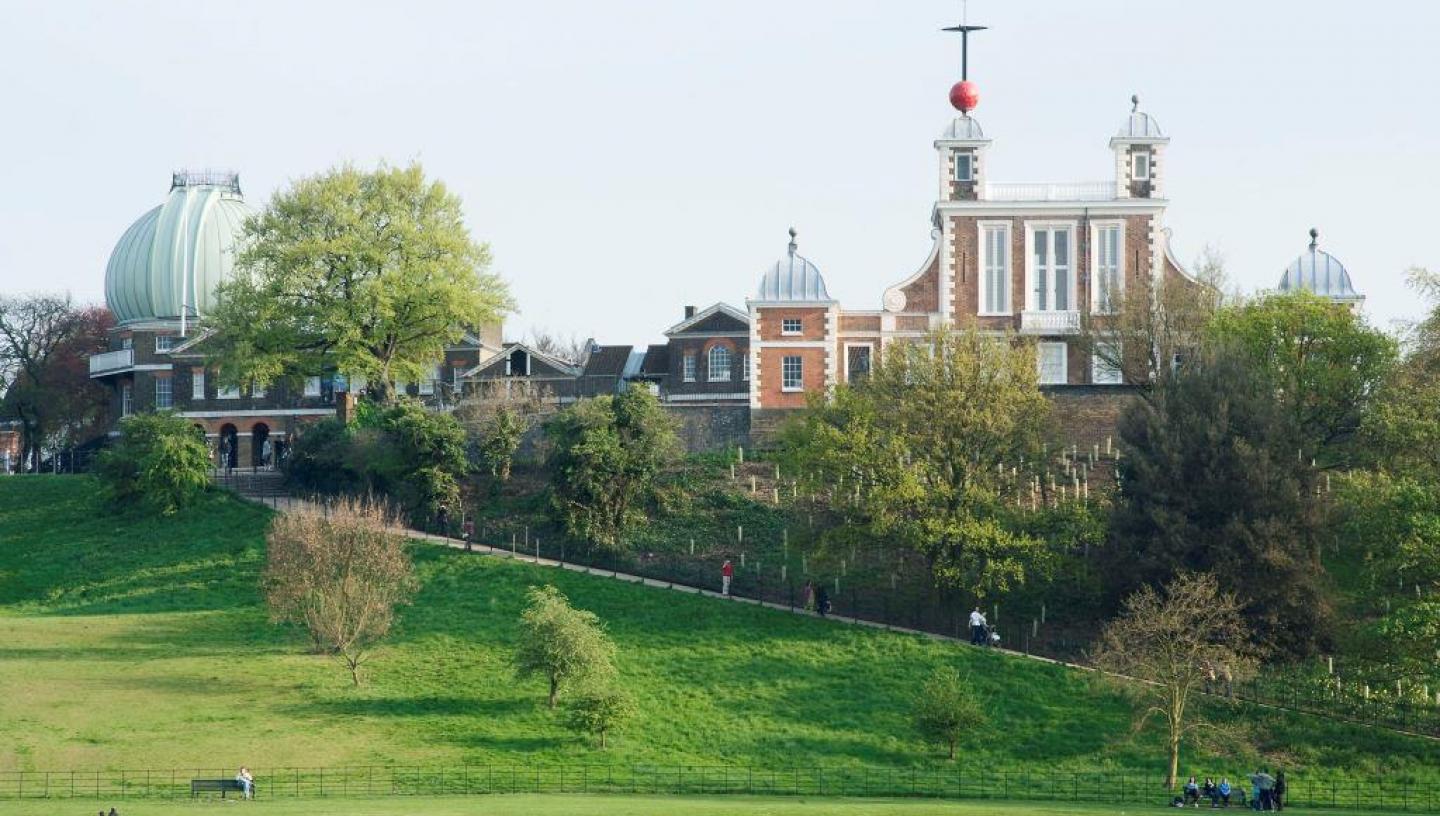The Greenwich Time Ball and one time for all
How do you know that your watch, clock or phone is telling exactly the right time? At one time, the only way was to look to the roof of the Observatory.
Picture the scene, you are looking down from the Observatory to the Thames bustling with tall ships. It’s the Victorian era and naval power and the British Empire are at their peak. On the decks, officers stand ready, watch in hand waiting for the signal on the hill. Setting the time will be a life and death matter for these mariners.
The bright red Time Ball on top of Flamsteed House is one of the world's earliest public time signals, distributing time to ships on the Thames and many Londoners. It was first used in 1833 and still operates today.
What does the Time Ball do?
Each day, at 12.55, the time ball rises half way up its mast. At 12.58 it rises all the way to the top. At 13.00 exactly, the ball falls, and so provides a signal to anyone who happens to be looking. Of course, if you are looking the wrong way, you have to wait until the next day before it happens again.
The Time Ball drops at 13.00 GMT during the winter months and 13.00 BST during the summer. Please note: the time ball will not be run if the weather is too windy.
What did people do before there was a time ball?
Only the richest people could afford to buy clocks and watches of their own. Most people relied on public sundials to tell the time. This led to different local times across the country, with clocks on the eastern side of the country about 30 minutes ahead of those in the west.
The difficulties created by everyone using their own local time eventually led to the creation of Standard Time based on the Prime Meridian at Greenwich.
The Shepherd master clock
In 1852, the Observatory had its own special clock installed, the Shepherd motor clock. This was connected to a sympathetic clock installed at the gates to the Observatory and was the first clock ever to show Greenwich Mean Time (GMT) directly to the public. People would bring their clocks or watches to Greenwich and check them, and in turn used their clock or watch to check those of other people. The Observatory gate clock is still there for us to use today.
The pips
Many people still use the pips broadcast by the BBC to set their watches and clocks by. At certain times of the day, usually on the hour, six pips are broadcast in quick succession. The last pip sounds slightly different from the rest. If your minute and second hand are both on the twelve when the last pip starts, then your watch is telling the right time.
Computers, phones and tablets
In order to function properly all computers, including smart phones and tablets, need to run their own system clock. As these devices are connected to the Internet, they generally query a central and extremely accurate clock. Most people now probably get their time directly or indirectly from these sources making Standard Time truly standard.
The Royal Observatory is open daily from 10am
